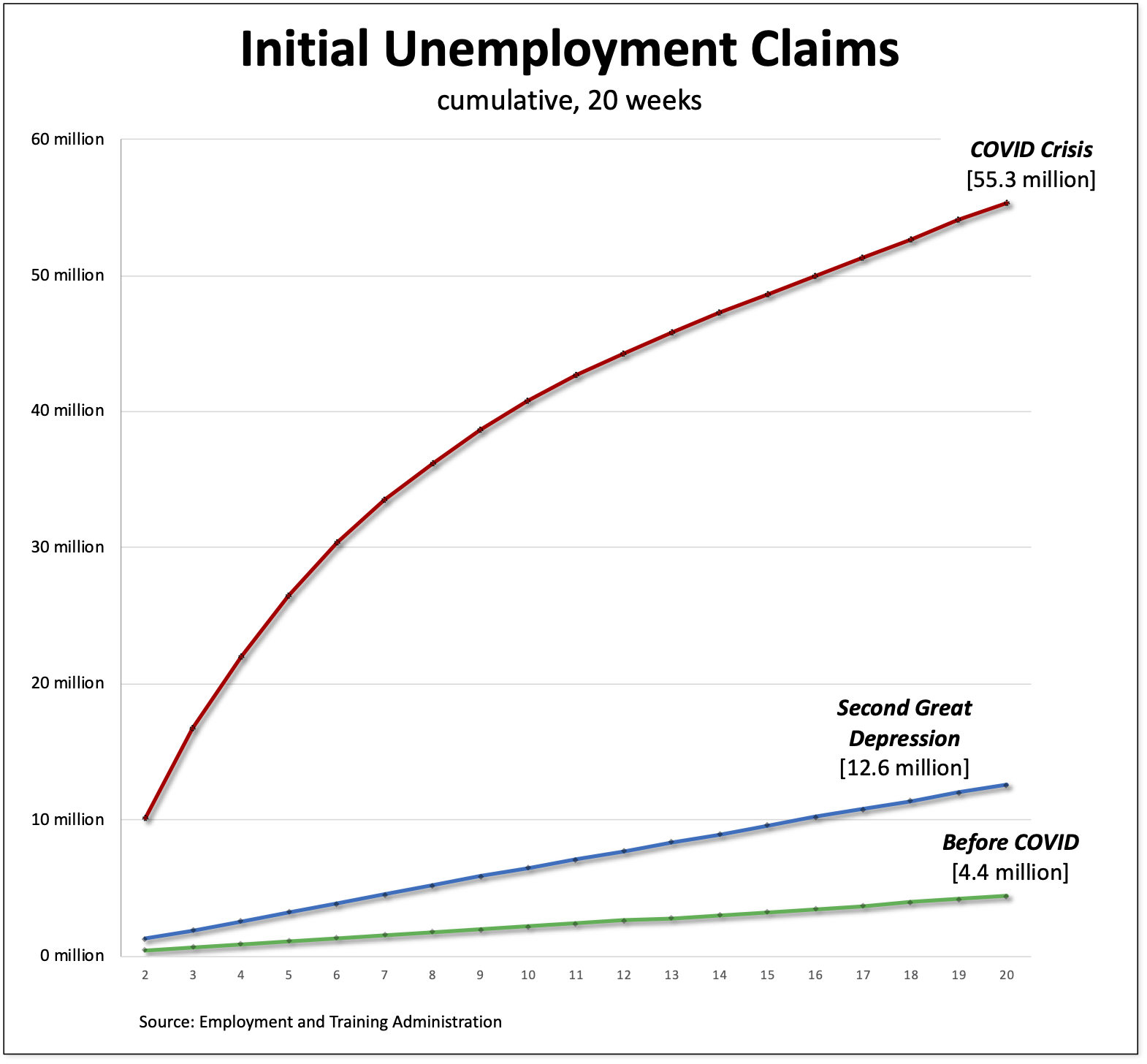
The total number of initial unemployment claims for unemployment compensation in the United State continues to rise.
This morning, the U.S. Department of Labor (pdf) reported that, during the week ending last Saturday, another 1.19 million American workers filed initial claims for unemployment compensation. That means initial jobless claims exceeded one million for the twentieth week in a row.
Here is a breakdown of each week:
• week ending on 21 March—3.31 million
• week ending on 28 March—6.87 million
• week ending on 4 April—6.62 million
• week ending on 11 April—5.24 million
• week ending on 18 April—4.44 million
• week ending on 25 April—3.87 million
• week ending on 2 May—3.18 million
• week ending on 9 May—2.69 million
• week ending on 16 May—2.45 million
• week ending on 23 May—2.12 million
• week ending on 30 May—1.90 million
• week ending on 6 June—1.57 million
• week ending on 13 June—1.54 million
• week ending on 20 June—1.48 million
• week ending on 27 June—1.41 million
• week ending on 4 July—1.31 million
• week ending on 11 July—1.31 million
• week ending on 18 July—1.42 million
• week ending on 25 July—1.44 million
• week ending on 1 August—1.19 million
All told, 55.3 million American workers have filed initial unemployment claims during the past twenty weeks.
To put that into perspective, I produced the chart above comparing the cumulative totals of the initial unemployment claims for the current pandemic compared to two other relevant periods: the worst point of the Second Great Depression (from mid-January to late May 2009) and the weeks immediately preceding the current depression (from early November 2019 to late March 2020).
As readers can see, the differences are stunning: 12.6 million workers during the Second Great Depression, 4.4 million in the period just before the COVID crisis, and more than 55 million in the past twenty weeks.
And now that emergency federal benefits have expired, the unemployed—both continuing cases and newly laid-off workers—will not be receiving the $600-a-week supplement that helped them pay their bills through the spring and early summer.

In the meantime, at least 1,253 new coronavirus deaths and 53,726 new cases were reported in the United States. As of this morning, more than 4,832,400 Americans have been infected with the coronavirus and at least 158,500 have died. The three-day rolling average of new cases per million people in the country was 157 compared to 31 cases for the world as a whole.
We can therefore expect to see new waves of business closures, which in turn will mean more American workers furloughed and laid off, and therefore a steady stream of initial unemployment claims, in the weeks and months ahead.
As Vijay Prashad [ht: ja] has explained,
The incompetence of the Trump administration—mirroring the dangerous incompetence of Jair Bolsonaro of Brazil and Narendra Modi of India—coming on top of a destroyed public health system and a failed private sector testing establishment has condemned millions of people in the U.S. to catch the disease and pass it on. There is—thus far—no prospect of breaking the chain of infection in the United States.


